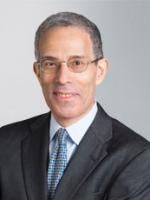The Delaware Supreme Court held yesterday that a stockholder seeking to inspect corporate books and records may use “reliable” hearsay to establish the propriety of the purpose of the inspection demand. The decision in NVIDIA Corp. v. City of Westland Police and Fire Retirement System (July 19, 2022) does not appear to break new ground on this issue, inasmuch as the Court concluded that it “appeared” to have allowed the use of sufficiently reliable hearsay in a 26-year-old decision, which neither party here asked the Court to revisit or overrule.
However, the NVIDIA decision could focus new attention on the admissibility of hearsay in the books-and-records context in light of the Court’s express observations about the lack of a direct attack on its prior ruling – and in light of a concurring opinion arguing that a stockholder should not be allowed to use hearsay evidence to establish a proper purpose for an inspection demand, but that out-of-court statements to support that purpose are not hearsay at all. The decision might also encourage stockholders to avoid these issues by providing direct testimony concerning their claimed purposes, instead of relying on hearsay evidence.
Factual Background
The NVIDIA case involved demands to inspect corporate books and records under section 220 of the Delaware General Corporation Law. The stockholders seeking inspection alleged that the company had made false or misleading statements about the demand for its products and that the CEO and CFO had sold stock at allegedly inflated prices before the so-called “truth” was revealed to the market and the stock price fell. The stock drop also led to securities litigation, in which the securities plaintiffs pled – based on a former company employee’s allegations – that the CEO and other executives had had specific knowledge of the threats to the company’s financial performance.
The company opposed the stockholders’ inspection demands, contending that the demands did not satisfy the statute’s form and manner requirements, the stockholders had not shown a proper purpose for their demands, the stockholders had not established a credible basis to infer wrongdoing, and the inspection requests were overbroad. The Court of Chancery overruled the objections and ordered production of certain documents.
The Delaware Supreme Court affirmed in part and reversed and remanded in part. Justice Traynor concurred in the decision and wrote separately to address the hearsay issue.
The Majority Decision
Much of the Court’s decision recites and applies some now-familiar principles that arise in many books-and-records cases.
The Court rejected the argument that the inspection demands’ alleged overbreadth violated § 220’s “form and manner” requirements. “[A] determination of the appropriateness of the scope of a stockholder’s requests, or any change to the stockholder’s requests, has no bearing on whether the plaintiff has satisfied the statute’s form and manner requirements.”
The Court also rejected the contention that the Court of Chancery must deny an overbroad inspection demand. Rather, “[t]he Court of Chancery has discretion to look at an overbroad demand and either identify the records that should be produced or to decide that it will not pick through the debris of an impermissibly overbroad demand.” In either case, the Supreme Court will review the Chancellor’s or Vice Chancellor’s ruling only for abuse of discretion.
But perhaps the most interesting part of the Court’s decision concerns NVIDIA’s argument that the stockholders had improperly relied on hearsay evidence – their inspection demands and interrogatories – to establish the propriety of their purpose in seeking books and records: to investigate whether corporate wrongdoing (including insider trading) had occurred. Under well-established law, a stockholder relying on that purpose must “show, by a preponderance of the evidence, a credible basis from which the Court of Chancery can infer there is possible [wrongdoing] that would warrant further investigation.”
The Court began by observing that the Delaware Uniform Rules of Evidence apply to all actions in Delaware courts, without any exception for § 220 proceedings. The Court also noted the parties’ agreement that the inspection demands and interrogatories that the stockholders had used to establish the purpose for their inspection demands constituted hearsay: out-of-court statements offered for the truth of the matter asserted. The existence of an exception to the hearsay rule in § 220 cases for purposes of establishing a credible basis to infer wrongdoing thus turned on a line of cases stretching back to the Court’s 1996 decision in Thomas & Betts Corp. v. Leviton Manufacturing Co.
The Court concluded that “it appears to us” that Thomas & Betts “created an exception in the 220 context that allows the use of sufficiently reliable hearsay in books and records actions.” The Court noted that NVIDIA “does not argue that Thomas & Betts was wrongly decided and does not ask us to revisit that decision”; the Court also stated that it was “not inclined to reconsider Thomas & Betts when neither party has asked us to do so,” particularly “without proper briefing and arguments on those points.” Accordingly, the Court held that “hearsay is admissible in a Section 220 proceeding when that hearsay is sufficiently reliable.”
However, the Court reversed and remanded the Court of Chancery’s ruling on the propriety of the stockholders’ purpose because the stockholders had deprived NVIDIA of the right to attack the reliability of their hearsay evidence (the inspection demands and interrogatories). The stockholders had “refus[ed] to cooperate with the Company regarding the identification of trial witnesses or affiants” and had effectively prevented NVIDIA from taking depositions. “If stockholders are going to introduce sufficiently reliable hearsay to establish a proper purpose, they must communicate honestly and early with companies regarding their intent so as to allow companies to decide whether to depose the stockholders or to identify their own witnesses for trial.”
The Concurrence
Justice Traynor “harbor[ed] serious misgivings about the Majority’s statement, grounded in our Thomas & Betts opinion, that ‘hearsay is admissible in a Section 220 proceeding when that hearsay is sufficiently reliable.’” Instead, he “would hold that hearsay evidence is inadmissible to show a stockholder’s purpose for an inspection of books and records under Section 220.”
However, Justice Traynor distinguished between evidence of the stockholder’s stated purpose (here, the belief that wrongdoing had occurred) and evidence of the basis for that stated purpose. “The fact to be proved [in a § 220 proceeding] is not the suspected wrongdoing but rather the reasonableness of the [stockholder’s] suspicion. Seen in this light, the out-of-court statements typically offered to satisfy the ‘credible basis’ prong are not offered to prove their truth. Thus, they are not hearsay.” Accordingly, a rule prohibiting hearsay evidence to show the stockholder’s purpose would not “limit a stockholder’s ability to use out-of-court statements to prove that there is a credible basis for her suspicion of wrongdoing” (in this case, for example, the allegations of the former employee cited in the securities litigation).
Implications
The NVIDIA decision raises a number of issues and strategic choices for books-and-records litigants.
First, stockholders litigating § 220 demands might wish to testify directly about their purposes for seeking corporate documents, instead of submitting hearsay evidence to establish those purposes. Doing so would avoid the issues that arose in the NVIDIA case.
Second, stockholders should heed the Court’s warnings about being “upfront about their plans regarding witnesses,” so that “companies can choose whether to depose the stockholders during discovery or call the stockholders as witnesses at trial.”
Third, some litigants (probably defendants) might see a reason to seek reconsideration and overruling of Thomas & Betts, which underlay the Court’s decision that “sufficiently reliable” hearsay is admissible in § 220 proceedings. The Court was careful to stress that no one had sought review of the 26-year-old ruling and that reconsideration was not advisable without a fully briefed request.
Fourth, especially if Thomas & Betts were to be overruled, Justice Traynor’s distinction between what is and is not hearsay (the stockholder’s stated purpose vs. the bases for the stockholder’s belief that wrongdoing might have occurred) could become particularly important. Under Justice Traynor’s analysis, a ruling rejecting the use of hearsay in § 220 proceedings would not prevent a stockholder from relying on unsworn, out-of-court statements to establish “a credible basis for [a] suspicion of wrongdoing.”



 />i
/>i

